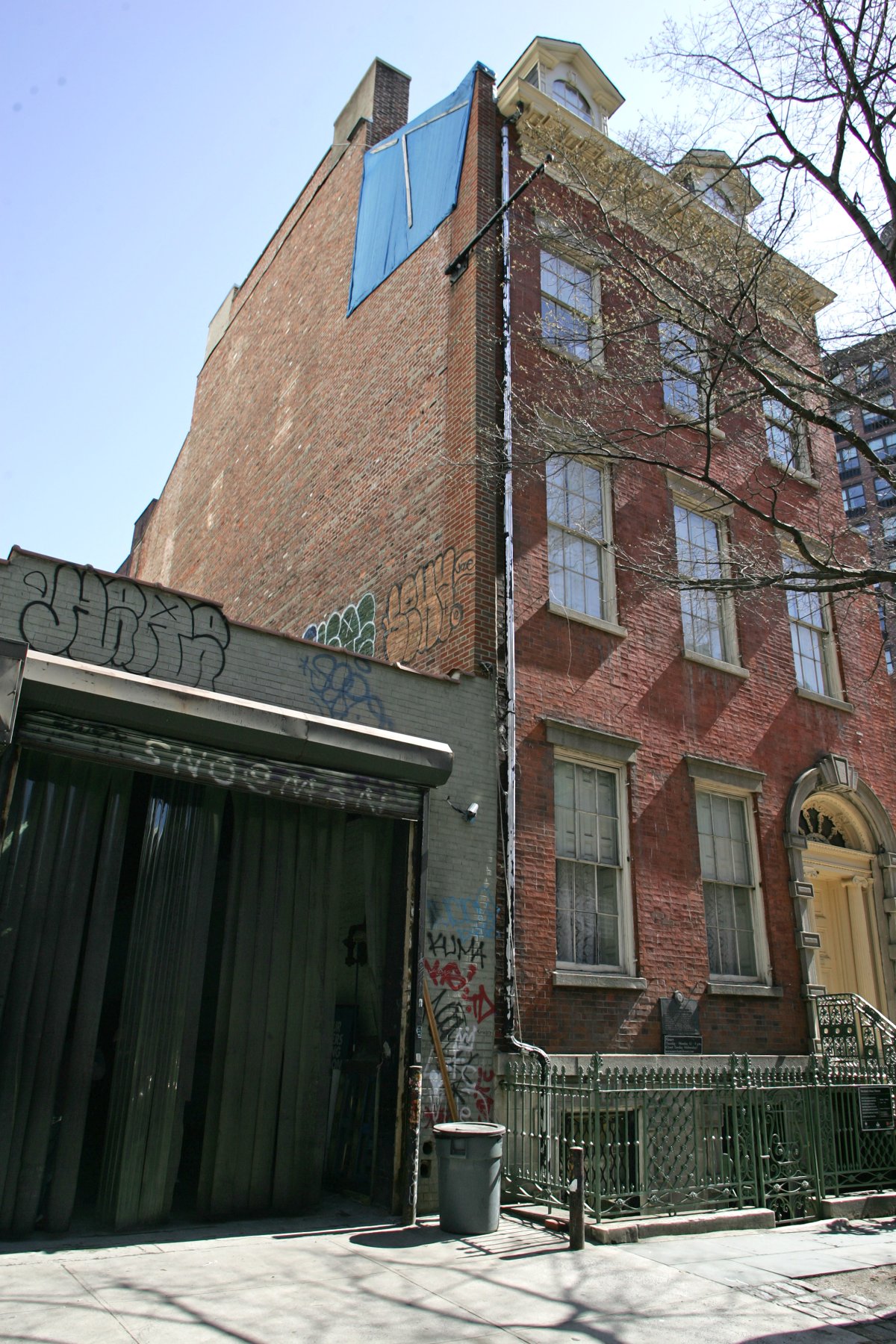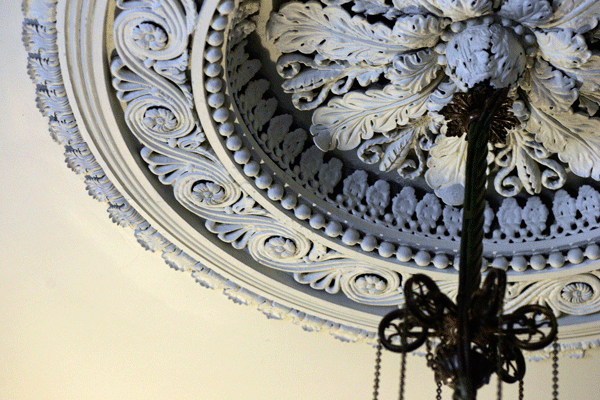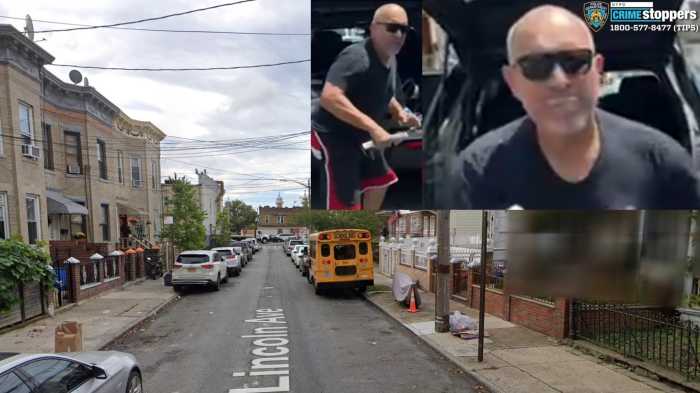
BY REBECCA FIORE | City Councilmember Rosie Mendez gathered with other local politicians on Nov. 13 to call for protecting the Merchant’s House Museum from any potential damage from a new hotel set to share a wall with the 185-year-old landmarked building.
In April 2014, the city’s Landmarks Preservation Commission, by a six-to-one vote, approved a construction plan for the eight-story hotel at the adjacent site. There is currently a one-story building on the site, at 27 E. Fourth St., that is used for storing food carts, Mendez said. She proposed possibly buying the property back from the developer, Constantine Fotos, to protect the museum and use the additional space for offices for the museum. Fotos could not immediately be reached for contact.
Currently, Mendez said, the museum’s offices are on the third floor of the building, at 29 E. Fourth St.
“The hope would be that if the Merchant’s House could purchase the one-story structure from the owner and developer, then those original rooms of the 1800s could be restored,” she said. “They are occupying rooms that could be on display,” she added of the museum’s current offices.
The Merchant’s House Museum was the first building in New York City to be designated a landmark under the 1965 Landmarks Law. It is one of 117 buildings in New York City that have both exterior and interior landmark status, and it is the only historic-house museum in Greenwich Village, Soho and Noho. It has more than 100 pieces of furniture, dating from 1815 to 1880, close to 70 lighting fixtures, ranging from oil lamps to gas chandeliers, and 40 dresses worn by the original ladies of the house.
“It’s a rare existing example of mid-1800s New York with all the personal properties,” Assemblymember Deborah Glick said. “It’s unique. That’s why it was designated not just an external but an internal landmark. We should take those designations far more seriously.”
Mendez said if the developer does not want to sell the adjacent property, then a more thorough protection plan for the museum is needed. She said she wasn’t satisfied with the current plan in place.
“We never thought it was sufficient,” she said. “If this project moves forward, it will be irreparable damage to the Merchant’s House.”
In 1987, a developer bulldozed buildings just east of the Merchant’s House Museum, causing so much damage to the historic structure that the museum was forced to close for two and a half years. The repairs cost nearly $1 million, according to the museum’s Web site.
“Engineers engaged by the Merchant’s House showed that it could cause enough damage to close the museum and enormous costs to move the contents of the museum to repair a wall that’s already been cracked,” state Senator Brad Hoylman said, fearing history could repeat itself. “We think the developer needs to talk to an architect in conjunction with the Merchant’s House to see the best way of proceeding.”

According to the museum’s Web site, there is no question that the building will be damaged during construction.
“If our building shifts a mere one-fourth an inch — as anticipated by the developers, and the maximum allowed by law — our original and irreplaceable 1832 ornamental plasterwork, considered the finest extant in New York city and a national treasure, will suffer damage.”
Glick said she does not think common ground can be found between the developer and the museum, and said she was disappointed in L.P.C.’s decision to approve the development.
“I don’t believe any construction could possibly be built to protect this crucial landmark,” she said. “It’s also a shame on the Landmarks Preservation Committee to proceed with construction that could threaten the building.”
When asked about the possibility of putting up a hotel without damaging the museum, Hoylman said, “We are operating without a lot of information. The developers came up with a plan to save the Merchant’s House but we don’t think it’s good enough. It needs extreme vetting. Given the potential for irreversible damage, I don’t see how one proceeds with the hotel. I don’t know how it can be done safely.”
Mendez said the next move is a meeting with the Mayor’s Office that will include her, Glick, Hoylman, City Councilmember-elect Carlina Rivera, the Merchant’s House Museum, Friends of the Merchant’s House Museum, and Andrew Chang, a community board liaison from Manhattan Borough President’s Gale Brewer’s Office.
“We are looking to the City Hall to join us in this effort of utmost importance,” Hoylman said. “We are talking about the potential damage or loss of one of our oldest buildings.”





























